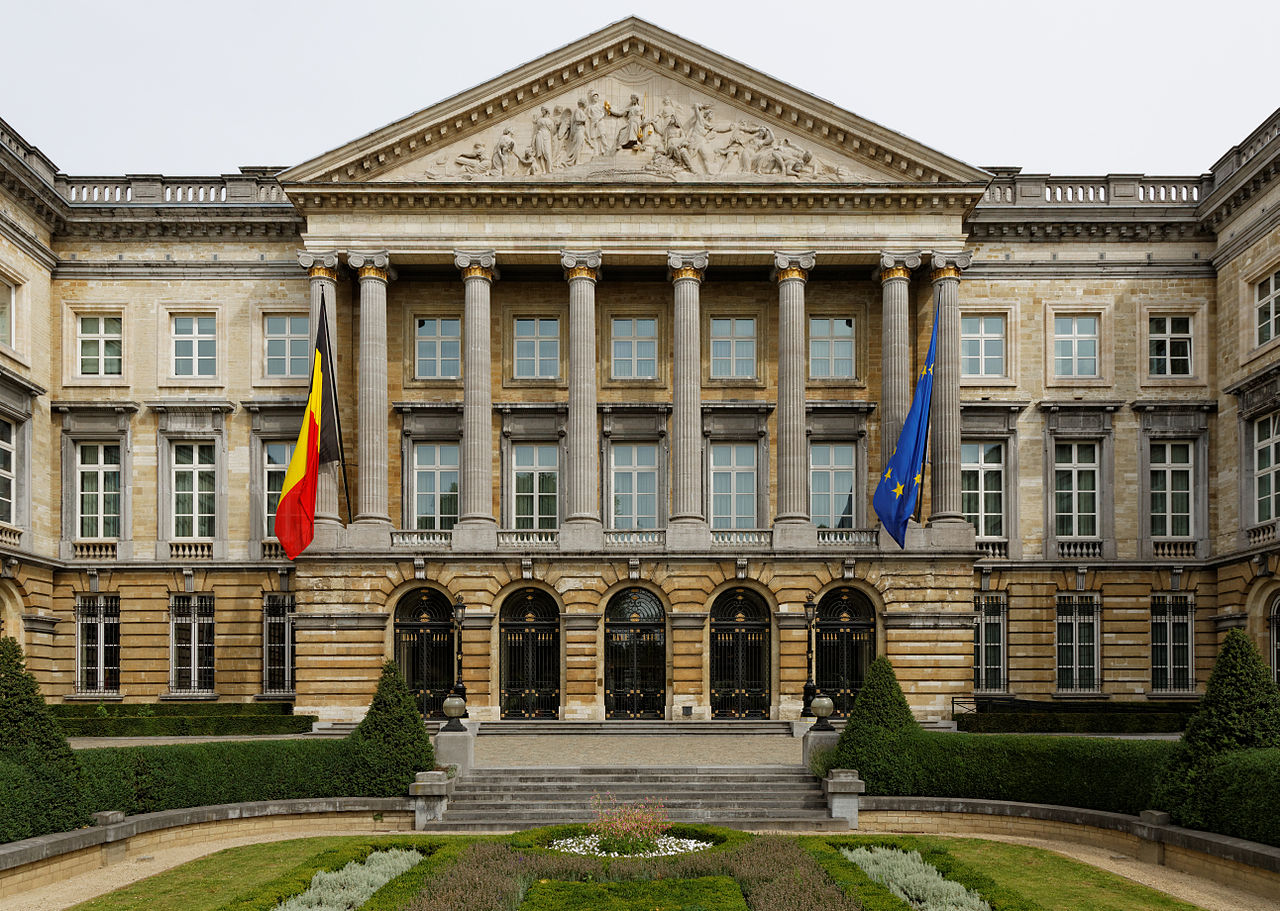Voters care about government formation even when the landscape is fragmented and coalition signals are ambiguous or absent
Advocates of proportional representation often claim that a reformed electoral system would eliminate the need for tactical voting, along the lines we are currently seeing the UK general election. Drawing on evidence from Belgium, Tom Verthé, Stefanie Beyens, Fernanda Flacco, Louise Nikolic, argue that voters do care about government and coalition formation even when the political and electoral landscape is fragmented, and coalition signals are ambiguous or even absent.

“Palais de la Nation Bruxelles” by Oakenchips CC BY-SA 3.0 via Wikimedia Commons
What reasons do voters have to act strategically in a proportional electoral system like the Belgian one? In a multiparty PR system, voters are never in a position to vote strategically in the conventional sense of the word (keeping a less-preferred party from executive power): Belgian coalition formations happen after the elections and are a party prerogative. However, the complex nature of multiparty PR systems still allows for strategic voting: not voting for your preferred party in order to influence the election outcome and, in this case, the post-electoral coalition formation game.
After considering which coalitions are possible or likely, a rational voter might weigh the odds of potential outcomes and policy compromises against each other. Voters can be tempted to abandon their preferred party because they think it does not stand a chance to participate in the next government coalition. Or they might do so because their preferred party actually has a high chance of getting into government, but the most likely coalition partner is one they particularly dislike, which would result in a compromise that would be too far removed from their own preferred policy positions.
Elections remain first and foremost mechanisms for government selection. Downs claimed this might be too complex a task in a PR context, yet Blais et al showed in 2006 that this ‘pessimistic conclusion’ is false in the case of the 2003 Israeli elections (see also this 2009 article by Bargsted & Kedar). Similar research has shown that there are a number of other PR systems (like Canada, Germany, The Netherlands and Austria) where a substantial share of the voting population either votes insincerely or strategically.
So far strategic coalition voting has not been studied in Belgium. In 2014 Belgian voters went to the polls for EU, federal and regional elections, all on the same day. This case has some features that might make it the least likely place to witness strategic voting behaviour, fuelling Downs’ pessimistic predictions. The party landscape has become hyper-fragmented (the previous federal government consisted of 6 parties, the current federal parliament hosts 13 parties) and almost every party has credible coalition potential. The Belgian federal structure further complicates the coalition formation process, since the country – apart from the Brussels capital region – is divided into two separate party systems based on the French and Dutch language groups and these need to be represented in the federal government coalition.
Needless to say that this presents even the most rational of voters with quite a challenge. However, we argue the opposite: because of its complexity Belgium presents voters with a myriad of ways to vote strategically. Our results, based on data from the 2014 PartiRep Voter Survey (www.partirep.eu), indeed show that even in Belgium strategic coalition voting is alive and well and that parties’ perceived coalition potential influence vote intentions for the federal elections.
Our paper started from the observation that not all voters adhere to the simple logic of voting for the party they most prefer. This might seem odd on the surface, but we set out to show that a substantial part of these insincere voters are in fact acting in accordance with their preferences, they just take into account that not all parties have an equal chance of becoming part of the executive. These voters want to avoid the risk of wasting their vote, not only by voting for a party that might not get into parliament, but also by voting for a party that will end up on the opposition benches. At the core, the underpinning dynamic is the same wasted-vote logic. Using parties’ perceived coalition potential as an instrument, we tried to determine how many voters actually take coalition considerations into account.
In our survey sample we see that about one in four voters with a clearly preferred party deviates from their preference and intend to vote for another one. Looking at the parties that are confronted with more insincere voting we can already see a pattern: traditional parties are less inflicted than smaller, newer or ideologically more extreme ones, with N-VA (Flemish regionalists) as an exception. Being an insincere voter might, however, be a prerequisite for strategic voting, it is not equivalent. To establish the role coalition considerations play in vote choice we followed two different paths.
First we tried to examine if coalition considerations have an effect on vote intentions or not. By transforming our data we could perform a conditional logit model that examined whether perceived coalition potential has an independent and significant effect on vote choice over and above other variables like ideological distance, party evaluations and some other case-specific control variables (The case-specific control variables are: gender, age, income, education level, political interest and sophistication). Our results indeed show that both in Flanders and Wallonia a higher perceived coalition potential increases the odds for voting for that party (an odds ratio of 1.2 for Flanders and 1.4 for Wallonia).
Our indirect approach thus confirmed what we already expected: voters take into account whether parties have a credible chance of making it into government when deciding whom to vote for. There are, however, also limits to this indirect approach. It establishes that coalition potential per se matters, but it does not give us any information on which voters effectively let these considerations sway their vote on an individual level. In order to identify this group we turned to a more direct method. The first step was to filter out sincere voters. It is entirely possible that certain sincere voters intend to vote for the party they like most because they expect that it is very likely that it will be part of the executive.
These voters are not included in our estimate, which most likely makes it an underestimation of the extent of actual coalition voting. The second condition was based on the relationship between the party the respondent intends to vote for and the one he/she prefers. When the coalition potential of the vote intention is higher than that of the preferred party, we consider this group of respondents strategic coalition voters. In Flanders the share of coalition voters is conservatively estimated at 6,2%, in Wallonia the number is slightly lower: 5,5%. This might not seem a lot, but the spoils are not evenly distributed among parties. Some parties profit from strategic voting, others lose a substantial amount of their potential electorate, even when the electoral threshold does not threaten them.
The green parties on either side of the language border suffer tremendously from coalition voting and lose more than one fifth of their electoral base. Taking coalition considerations out of the picture, we see that that some parties gain a few percentage points while others lose some. In a highly fragmented party landscape these differences suffice to impact the leverage parties have when it comes to coalition formation.
Our (conservative) estimates also raise some normative questions. If voters are capable and willing to weigh their preferences and decide whether they prefer to vote for the party they like best or deviate from this by picking a party that sufficiently combines ideas with the ability to transform them into policy as part of the executive, is it not up to political parties to present them with clear information? In Belgium coalition signals are almost a taboo, while everyone knows coalitions are unavoidable. The multi-layered federal structure doesn’t make things easy for political parties: they need to look for a sufficient number of partners in order to get a majority, both within and outside of their own language group. Furthermore, they also need to take into account the political majorities on other levels of government. This doesn’t, however, absolve parties from their duties. They themselves could take the lead and bring about order among the chaos.
Now parties wait for the signal of the voter, as if it were the responsibility of Flemish and Walloon voters to coordinate coalition formation. This might be confusing and frustrating for voters who do care – and rightly so – about what will happen with their vote after leaving the polling station. Would voters reward parties that show their hand and penalize those who don’t, or would the result be exactly the same as it is now?
We do not have an answer to this question. Pre-electoral coalitions/alliances were in vogue for a while about a decade ago, but they were never used as instruments to present viable coalition alternatives to the electorate. The main lesson we learn from this paper is an encouraging one: voters care about government formation even when the landscape is fragmented and coalition signals are ambiguous or absent. It is up to parties to decide whether to cater to this or to ignore it and keep their hands free for (a few hundred days of) coalition bargaining.
—
Note: This post is based on a paper/book chapter in Deschouwer, K., Delwit, P., Hooghe, M., Baudewyns, P. & Walgrave, S.: De kiezer ontcijferd/L’électeur décrypté, Brussels, Academic & Scientific Publishers [publication May 2015] and preliminary versions have been presented at IPSA, ECPR and EPOP 2014.
This post represents the views of the author, and not those of Democratic Audit or the LSE. Please read our comments policy before posting.
—
 |
Tom Verthé is a researcher at the Vrije Universiteit Brussel and research manager of the PartiRep Interuniversity Attraction Pole (www.partirep.eu). His research mainly focuses on the strategic behavior of parties and voters, both in a qualitative and quantitative manner. |
 |
Stefanie Beyens is a PhD-student at the Vrije Universiteit Brussel who is writing her dissertation on the survival chances of new political parties in advanced democracies. |
 |
Fernanda Flacco is a Researcher at the Université Libre de Bruxelles |
 |
Louise Nikolic is a PhD student at the Université Libre de Bruxelles |





 Democratic Audit's core funding is provided by the Joseph Rowntree Charitable Trust. Additional funding is provided by the London School of Economics.
Democratic Audit's core funding is provided by the Joseph Rowntree Charitable Trust. Additional funding is provided by the London School of Economics.
Voters care about government formation even when politics is fragmented and coalition signals are ambiguous or absent https://t.co/0zZQF4LmDo
Voters care about government formation even when the landscape is fragmented and coalition signals are ambiguous o… https://t.co/pAIp747wLo
Tactical voting happens even in a hyper-fragmented party system. Interesting stuff! https://t.co/yWHe89rpEo
Voters care about government formation even if the landscape is fragmented & coalition signals are ambiguous/absent https://t.co/0zZQF4LmDo
Voters care about government formation even when the landscape is fragmented and coalition signals are ambiguous… https://t.co/3cWRdNK1SM